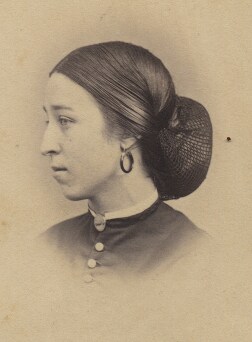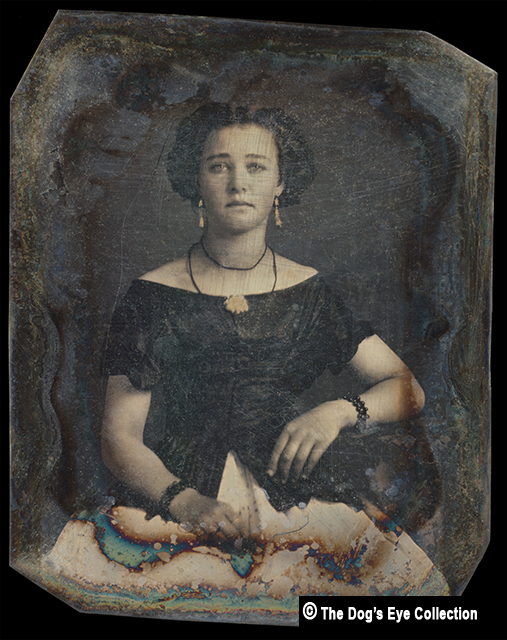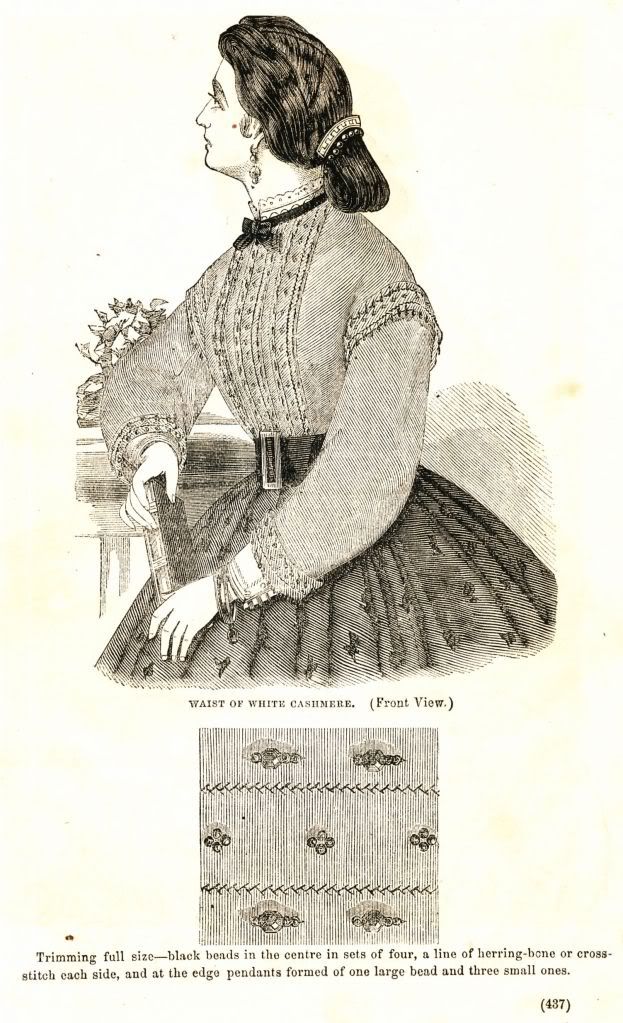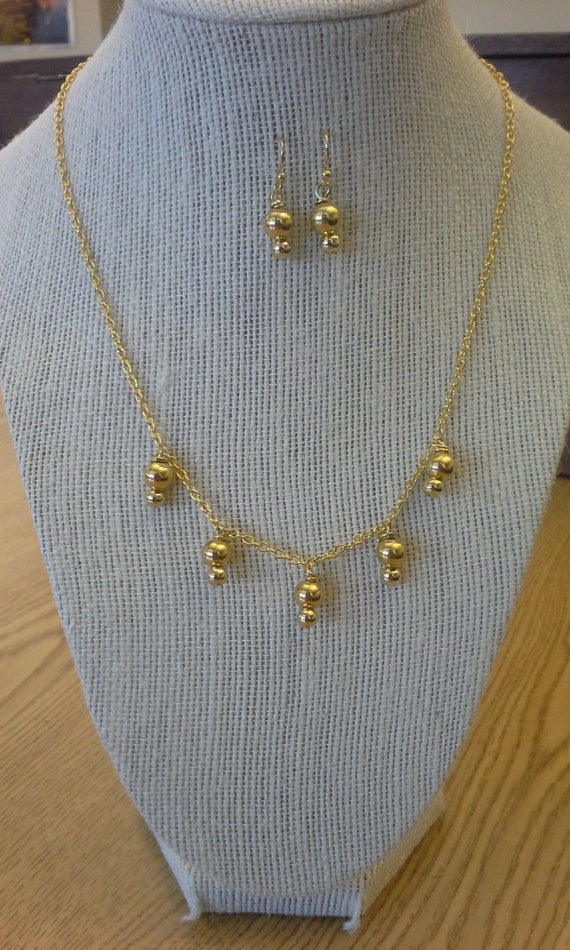I've found myself fascinated by the gold designs in antique jewelry. In a way I've already talked about the Etruscan style; snakes and coral both fit nicely into that category. And the early Piqué work shows the feeling of naturalism that spread through jewelry of the 19th century. I suppose this post has been a long time coming!
History
The 19th century saw the rise of scholarly interest in the art of archeology. British, American, and other citizens trekked across the middle east, mediterranean, and Africa in order to find artifacts. Many people of importance dabbled in archeology; Napoleon and Thomas Jefferson both spent time digging up different parts of the earth. The discovery of the Rosetta Stone in 1801 and its eventual translation fascinated many.
Surviving Etruscan gold popped up often during the digs. Even by today's standards this jewelry would be considered pretty; I can imagine the awe of a19th century lady, seeing them at an exhibit in a museum.
Godey's, April 1855
Godey's, January 1856
Godey's, March 1859
Peterson's, 1860
Godey's Lady's Book in June, 1860: "'Costly and elegant ornaments,' observes Professor Rosselini, 'abounded in proportion as clothing in general was simple and scarce among the Egyptians. Girdles, necklaces, armlets, ear-rings, and amulets of various kinds suspended from the neck, are found represented in the paintings, and in fact still exist on the mummies. Figures of noble youths are found entirely devoid of clothing, but richly ornamented with necklaces and other jewels."
La Mode Illustree, journal de la famille, 1861
A Greek/Roman Girl, Godey's, November 1863
La Mode Illustree, journal de la famille, 1863
In necklaces there are specimens of each one of the classical styles— Etruscan with scarabei; Greek with medallion female heads in English porcelain enamel; Egyptian, copied from the original found on a mummy, by permission of Lord Henry Scott; and also a noticeable collection of Oriental onyxes with cinque-cento. setting. Nor must we overlook a bracelet formed of a massive gold band into which are introduced the beautiful green Brazilian beetles, which, by a peculiar process of drying, become hard and durable as stone. A variety of brooches, etc., with Roman, Greek, and Etruscan settings, complete this display of modern antiques. There may be a diversity of opinion as to the real value of such revivals applied to personal ornament; but the highest fashion of the day sanctions them, and, as works of art demanding research and careful study of detail in their workmanship, they are well worthy of examination.
Godey's, March 1863
One family in particular would capitalize on this exotic style craze. Fortunato Pio Castellani, of Rome, started his jewelry business in 1814. After seeing the popularity of the revival jewelry, he searched for craftsman that could still reproduce the Etruscan gold-work. Under the title of "Italian Archeological Jewelry," Castellani's business thrived. His sons Alessandro and Augusto continued the family art in London and Paris, presenting at international exhibitions and even gifting a set of revival jewelry to Napoleon III. The business stayed open until 1930, when the last Castellani descendent died.
Based on the sheer number of references to Etruscan, Roman, Greek, and Egyptian items, it is very easy to see the influence on jewelry. Amphora, acorns, leaves, snakes, key trim...all popular motifs in this gold work. I would bet that more than a few jewelers were influenced by Castellani and the research of fashionable jewels in the ancient world. Gold ornamentation became so popular!
Photographic Documentation
Hooray! I can actually find pictures of ladies wearing (what I believe to be) revival style jewelry!
Just as in my other research, I cannot confirm the exact type of jewelry on each lady. I looked for shape and gold coloring in each cdv/daguerreotype. There are at least a dozen more blurry, less defined pictures that I could include here, but I'm not sure it's necessary. It's fairly obvious that gold worked jewelry was very popular!
Textual Documentation
Some Gossip on Novelties, Godey's Lady's Book, December 1860
In jewelry, solid gold ornaments richly chased, of the style called Etruscan, are new and in good taste.
Vincennes Gazette, September 1860
THE WEEKLY VINCENNES WESTERN SUN. January, 1860.
THE CHRISTIAN RECORDER, March, 1861
VISIT CLARK'S STORE. THE LARGEST IN THE WORLD!.
JEWELRY AND FANCY GOODS.
Ladies' Cameo Sets.
" Lava Sets.
" Carbuncle Sets.
" Enameled and Coral Sets.
" " Carbuncle Sets.
" " Ruby Sets.
" Gold Cluster Grape Sets.
" " " Jet Sets.
" " " Black Mosaic Sets.
" " " Gold Stone Mosaic Sets.
" " " Fancy Stone Sets.
" " Ribbon Twist Sets, with brilliants.
" " Bouquet Sets, new styles.
" " Cluster Sets, Enameled Styles.
" Plain Gold, Florentine, and Onyx Sets.
" Goldstone, and Coral Sets, different styles.
" Etruscan Lava, and Carbuncle Sets.
Chitchat upon Fashions, Godey's Lady's Book, February, 1863
The ornamental back and side combs which we have before noticed still continue very fashionable, and are more beautiful every day. The classical designs are in the best taste, most of them being of the Etruscan or Grecian styles. The hair should be arranged in a bow at the back and very low in the neck. The front can be either braided, rolled, or waved.
Frank Leslie's Weekly, 1863
Chitchat upon Fashions, Godey's Lady's Book, January, 1864
In jewelry, the prevailing taste is for the peculiar, though the Roman , Greek, and Egyptian are greatly in favor. Among the novelties are necklaces, composed of dead gold bells, from which depend tiny gold daggers, connected with each other by rows of fine chains, which fall in festoons.
Peterson’s, 1865
Lady's Friend Magazine, 1865
It wasn't difficult to find examples of archaeological influence on jewelry from the time period. They show up in advertisements, stories, and fashion discussion. One problem I found with this type of evidence was the use of vague language-my perspective of "Etruscan" can be quite different from the 19th century interpretation. The plates do help a bit, and they mimic the ancient jewelry in shape and content. Based on this textual documentation, revival-inspired jewelry was common.
Surviving Originals
19th Century (I know I cheated with silver!)
I want every one of these! The gold work is intricate but simple; the artists really capture the spirit of the ancient jewelry. Intricate designs on a simple background of gold makes for a stunning piece. The surviving originals tie both the photographic and textual documentation together to form a picture of the Etruscan style of the 19th century.
Conclusion
The evidence points to the common usage of ancient-inspired jewelry, especially in terms of worked gold. The Victorian interest in the revival certainly came through in their adornments! It also appears that such jewelry wasn't necessarily for the most formal occasions; gold earrings, combs, even necklaces could be worn in the daytime with fashionable clothing.
Of course I have to try to reproduce it all in some way...and now they're in my etsy shop!
I have seen a number of intricate gold earring sets within the reenacting community, so it is nice to see representation of the Etruscan style available to the public. Now with a bit more documentation available, ladies can speak more of the style!
~Kristen
Sources:





















































